Hooping for Machine Embroidery
The part of embroidery that requires the most skill, but has the greatest payback, is hooping. Properly hooping the fabric will yield the best results—matching outlines, pucker-free fabric, and smooth, neat stitching.
- 1. The first step to properly hooping the fabric is properly prepping the fabric. Make sure the fabric is clean (pre-washing is preferred) and wrinkle-free. The stabilizer itself should also be wrinkle-free. OESD stabilizers come on a roll, which helps to keep them neat and ready to use. If your stabilizer has gotten wrinkled, press it before using.
- 2. Mark the center of your embroidery design onto your fabric. Position the stabilizer on the back of the fabric to be embroidered. It is very helpful to adhere the stabilizer to the fabric with a temporary adhesive spray or by ironing the stabilizer to the fabric if it is fusible.
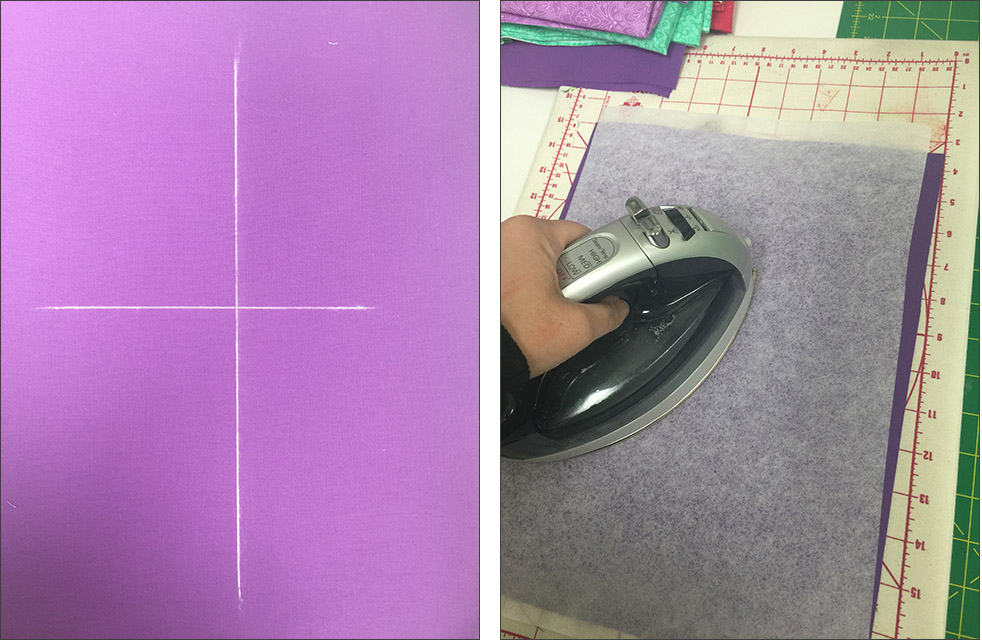
- 3. To properly hoop your fabric, you will need a flat working space. A kitchen table or counter or cutting table works nicely. Make sure your area is free of clutter so you are not struggling to work around it. (Don’t fret—you only need to clean off an area large enough to do your hooping!) Begin with the stabilizer flat against your work surface, with the right side of the fabric facing you. If you are working with a garment, you may first need to turn the item inside out, place the stabilizer side against the table, and then gather up the rest of the garment to reveal the area to be embroidered on.
- 4. Now prepare the hoop by loosening the screw to open up the hoop. With the hoop spread open, there should be enough room between the outside hoop and the inside hoop for the thickness of both the fabric and stabilizer.
- 5. Place the inside ring on top of the fabric, aligning the center of the hoop with the center marked on the fabric. Place the outer ring on a flat surface near your project.
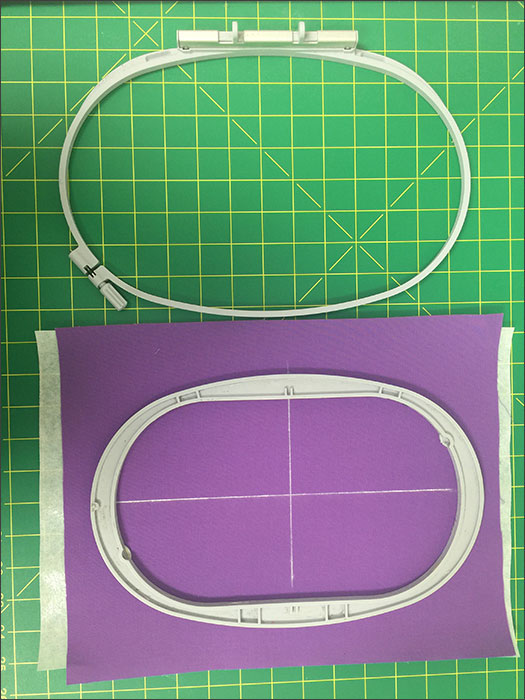
- 6. Grasp the fabric, stabilizer, and inner hoop together, holding the fabric securely so the position of the fabric within the hoop does not shift.
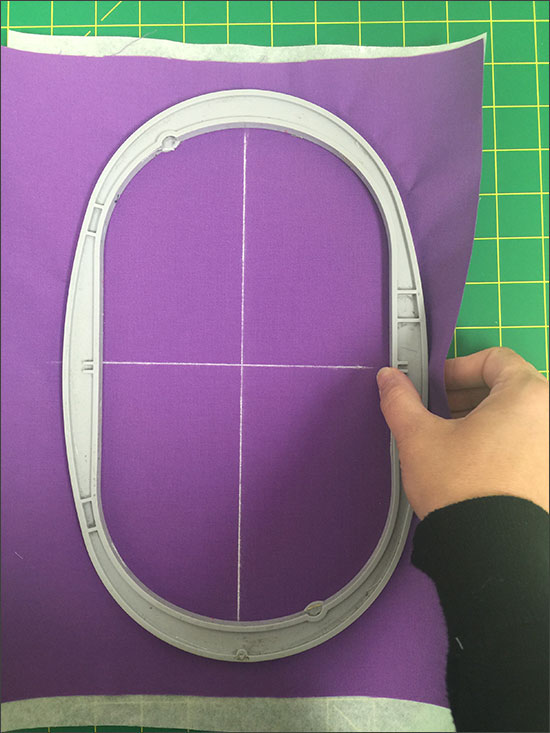
- 7. Place the inner ring into the outer ring, pressing it gently into place.

- 8. If the hoop does not go in easily, loosen the screw more. If you attempt to force the inner ring into the outer ring, you can cause friction marks (aka “hoop burn”) on your fabric. Once the inner ring is inside the outer ring, hold the inner ring in place and slide the whole hoop to the edge of the work surface and tighten the screw.
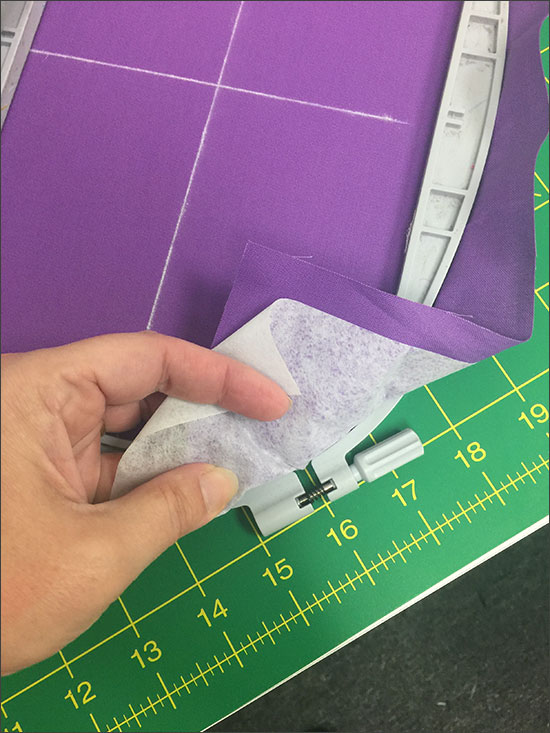
- 9. The screw should be tightened as tight as possible by hand without straining. If you have a physical limitation that prevents you from getting it tight enough by hand, use a screwdriver or tool to help tighten the screw, being careful not to strip the threads.
- 10. If all of the above steps are done correctly, the fabric should be flat and straight in the hoop, without any wrinkles. It should not be stretched in the hoop. There should be no slack in the fabric, but it should not be pulled out of shape. If the fabric is pulled too tight, it can distort the fabric and cause puckering around the stitching when the fabric is removed from the hoop. This is particularly true with knit fabrics. One way to think of this is that the fabric should be “at rest” in the hoop—laying flat exactly as it would if you laid it flat on the table, but held securely in place by the hoop.
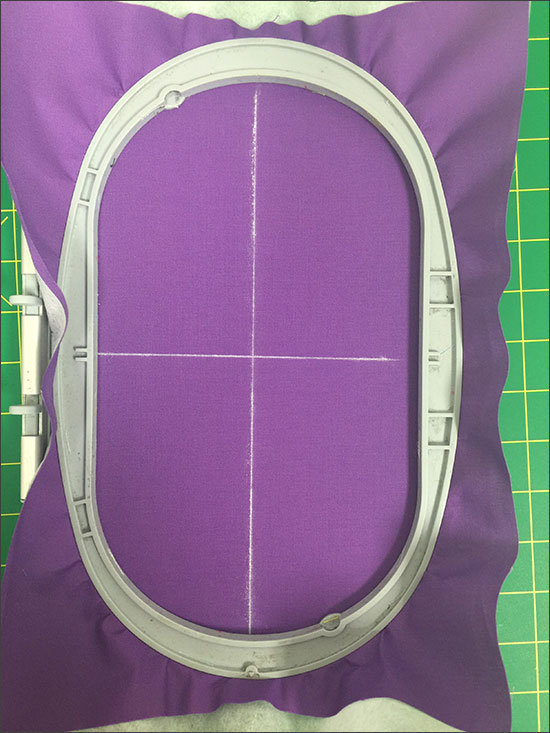
- 11. If you do get a small wrinkle, you may be able to pull it out very gently, being sure to grasp both the fabric and the stabilizer. Be sure not to stretch the fabric out of shape or off grain.
- 12. Once the fabric is hooped, it can be placed on the machine and embroidered.

- 13. If your embroidery is properly stabilized and hooped, you will see a smooth, pucker-free finish to your embroidery.

- 14. When the embroidery is complete, loosen the screw and then remove the fabric from the hoop. Pushing the inner ring loose without loosening the screw can cause friction marks on the fabric, and can also cause strain on the hoop and the screw—causing it to wear out more quickly.
- 15. With all of the opening and closing of the hoop, the screw’s threads can eventually wear down. If you find that your hoop doesn’t seem to be holding as well as it once did, check with your embroidery machine dealer to see if a replacement screw is available.
This material is © OESD, LLC and may not be reproduced or published without permission.
